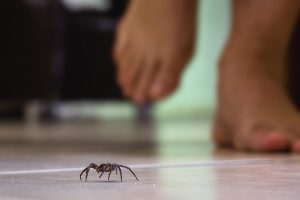The remarkable process of chair reupholstery represents one of humanity’s most elegant adaptations to our ever-changing domestic environment, much like the way organisms evolve to thrive in new ecological niches. In the grand tapestry of human behaviour, our instinct to preserve and renew rather than discard reveals a deeply embedded biological wisdom that has ensured our species’ survival for millennia.
The Evolutionary Imperative of Restoration
Throughout the natural world, we observe countless examples of renewal and adaptation. The hermit crab abandons its outgrown shell for a larger one, whilst the snake sheds its skin to accommodate growth. Similarly, reupholstering chairs allows us to maintain the structural integrity of well-crafted furniture whilst adapting its aesthetic and functional qualities to meet contemporary needs.
These behaviour patterns align with what biologists term “optimal foraging theory.” Just as animals must decide whether to continue exploiting a diminishing resource or seek new opportunities, we face similar decisions with our furniture. The choice to pursue chair restoration Singapore represents an efficient allocation of resources, maximising utility whilst minimising waste.
The Ecosystem of Skilled Craftsmanship
In Singapore’s vibrant ecosystem of artisans and craftspeople, chair upholstery specialists occupy a unique niche. Like the mycorrhizal networks that connect forest trees, these skilled practitioners form interconnected webs of knowledge, sharing techniques passed down through generations whilst adapting to modern materials and methods.
The biodiversity within this craft community ensures resilience and innovation. Each practitioner brings distinctive skills and perspectives, creating a robust ecosystem capable of addressing diverse restoration challenges. This specialisation mirrors the way different species fill specific ecological roles, each contributing to the overall health and functionality of their environment.
The Anatomy of Renewal
When we examine the process of professional chair reupholstery Singapore, we discover striking parallels to biological regeneration. Just as a salamander can regrow a lost limb whilst maintaining its essential identity, skilled craftspeople can completely transform a chair’s appearance whilst preserving its fundamental character and structural DNA.
The restoration process typically follows these evolutionary stages:
- Initial assessment to determine the chair’s “genetic” qualities and structural health
- Careful deconstruction to preserve valuable components whilst identifying areas requiring renewal
- Selection of appropriate materials that complement the chair’s natural characteristics
- Reconstruction using techniques that honour both traditional methods and modern improvements
- Quality evaluation to ensure the restored piece will thrive in its intended environment
“The art of chair restoration requires understanding both the original maker’s intentions and the contemporary user’s needs,” observes a respected practitioner in Singapore’s furniture restoration community. “We serve as stewards of design evolution, helping pieces adapt to new environments whilst preserving their essential nature.”
The Symbiotic Relationship Between Human and Furniture
Our relationship with chairs exemplifies what I have termed “biophilia”, the innate human affinity for living systems and natural processes. Though furniture may seem inorganic, well crafted pieces develop what we might call a “patina of life” through their interactions with human users over time.
Chair upholstery restoration strengthens this symbiotic bond. When we choose to renew rather than replace, we acknowledge the accumulated wisdom embedded in these objects. Like the beneficial bacteria that colonise our digestive systems, our furniture becomes part of our extended phenotype, shaping our daily behaviours and comfort levels.
The Conservation Biology of Furniture
From a conservation perspective, singapore chair reupholstery practices represent a form of cultural biodiversity preservation. Each restored piece maintains genetic links to historical design traditions, ensuring that valuable craftsmanship knowledge does not become extinct.
The environmental benefits include:
- Reduction in resource extraction for new furniture production
- Preservation of embodied energy already invested in existing pieces
- Maintenance of local craft ecosystems and traditional skills
- Decreased pressure on forest resources through extended furniture lifespans
- Prevention of waste accumulation in local environments
Adaptation Strategies for Modern Living
Contemporary chair restoration singapore allows for remarkable adaptations that would make Charles Darwin proud. Ancient hardwood frames can receive modern foam technologies, whilst traditional joinery techniques accommodate contemporary ergonomic requirements.
This evolutionary flexibility enables furniture to survive and thrive across changing design epochs. Like the peppered moths that adapted their colouration during the Industrial Revolution, restored chairs can modify their aesthetic appearance whilst maintaining their core structural advantages.
The Social Ecology of Restoration Choices
Our decisions about furniture restoration reflect broader patterns of human social behaviour. Communities that prioritise repair and renewal often demonstrate greater social cohesion and environmental consciousness. This mirrors the way ecosystems with diverse recycling mechanisms tend to be more stable and resilient.
The choice to invest in reupholstering chairs rather than purchasing replacements signals membership in a community that values quality, sustainability, and long term thinking. These social signals strengthen group bonds and reinforce cooperative behaviours that benefit the entire community.
The Phenotypic Expression of Personal Style
Through chair restoration, we express our extended phenotype, how our genes influence our environment beyond our physical bodies. The fabrics we choose and styles we prefer reflect deeper biological and cultural programming.
This customisation allows us to create environments that optimise our well being. Like birds constructing nests that suit their species’ requirements, we shape furniture to meet our specific needs.
The Future of Adaptive Furniture Practices
As we face increasing environmental pressures and resource constraints, the principles underlying successful chair restoration become ever more relevant. The skills and attitudes that enable effective furniture renewal will likely prove essential for navigating broader sustainability challenges.
The craftspeople who specialise in this work serve as important keepers of practical wisdom. Their knowledge of materials, techniques, and adaptation strategies provides templates for approaching other conservation challenges.
Conclusion: The Wisdom of Renewal
In choosing restoration over replacement, we align ourselves with the fundamental processes that have sustained life on Earth for billions of years. The decision to pursue chair reupholstery reflects an understanding that true efficiency often lies not in constant replacement, but in thoughtful adaptation and renewal of existing resources.



